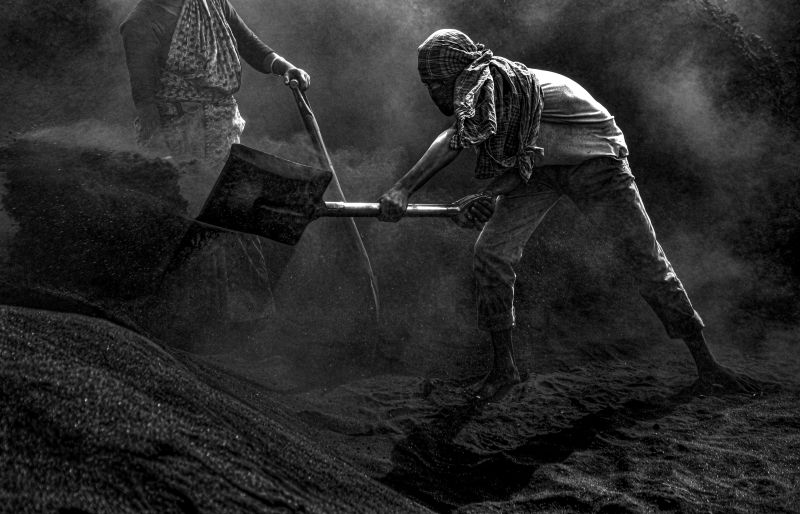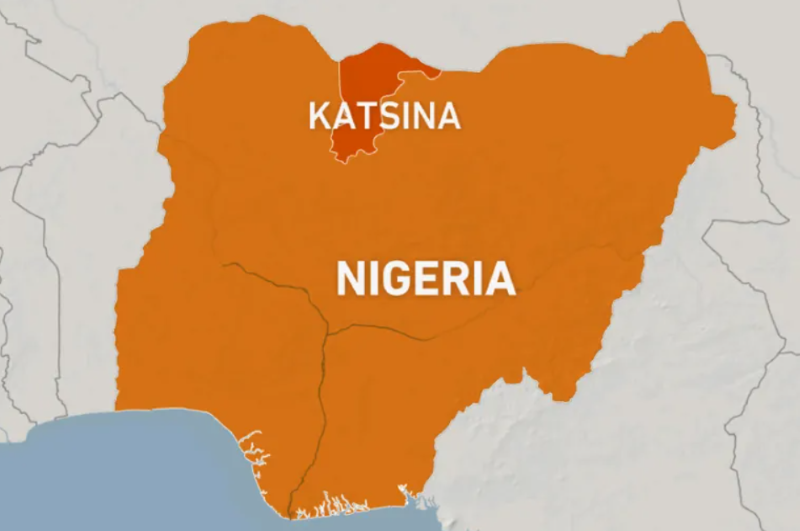Key takeaways
-
- India’s energy demand is poised to soar, but duplicating China’s path could mean quadrupling coal use to 6 billion tonnes/year.
- Despite big gains in solar and wind capacity, low-capacity factors mean coal still delivers 70%+ of electricity consumed.
- India’s energy strategy is shaped by security and cost, not just climate goals, making coal more resilient in its energy mix than gas.
- If India consumed energy at China’s per-capita level, its oil and gas needs would triple and sextuple, respectively, with attendant geopolitical ripples.
- The energy choices of China and India carry implications for emissions, markets, and diplomacy.
What if India consumed like China?
There are at least three reasons to assess India’s coal consumption using China’s energy consumption per capita. First, India has growth aspirations that will necessitate increased energy consumption. Second, coal is the most significant source of energy to India and a global concern due to its carbon intensity. Third, India’s growth aspirations place it in a position to influence the global energy supply landscape.
Assuming India’s current energy mix, if its per-capita energy consumption were at the level of China, India would consume a total of 49,921 TWh (80.39 MMBOE/d) of energy as per Table 1. Of this amount, 26,362 TWh (42.45 MMBOE/d or 6.06 billion tonnes/yr) would be coal, which is four times India’s current coal consumption. This gives a sense of the scale of India’s energy requirement and the attendant emissions impact.
| Energy sources | Share2 | Energy consumed (TWh) | Incremental
(TWh) |
|
| Actual India | “India as China” | |||
| Other renewables1 | 1.3% | 70 | 671 | 601 |
| Biofuels | 0.1% | 48 | 38 | -10 |
| Solar | 4.2% | 334 | 2,107 | 1,773 |
| Wind | 5.0% | 199 | 2,504 | 2,305 |
| Hydro | 6.8% | 382 | 3,401 | 3,019 |
| Nuclear | 2.3% | 133 | 1,132 | 999 |
| Gas | 9.0% | 703 | 4,473 | 3,770 |
| Coal | 52.8% | 6,380 | 26,362 | 19,982 |
| Oil | 18.5% | 3,029 | 9,231 | 6,202 |
| Total | 100.0% | 11,276 | 49,921 | 38,645 |
| Note:
1 Other renewables include geothermal and biomass 2 India Energy Consumption Share by Source (2024) China’s per capita energy consumption is 34,406 kWh/capita (2024) Population based on World Bank Indicators |
||||
Table 1: India’s energy consumption if its per-capita consumption were similar to that of China.
Further, India would consume 9,231 TWh of oil (14.87 MMBOE/d) and 4,473 TWh (7.2 MMBOE/d or 41 BCF/d) of gas, which is respectively three times and six times more than India’s current consumption level for these hydrocarbon resources (aka fossil fuels).
More broadly, India (consuming at China’s per-capita level) would consume more of all energy except biofuels, where it would consume 20% less than it currently does.
This analysis does not factor in the time required for India to achieve parity with China’s per-capita energy consumption, possible efficiency gains over that time, as well as a changing energy mix.
India’s energy policy is focused on increasing the share of non-hydrocarbon fuel in the energy consumed, and reducing overall energy demand in the economy. Next, we examine the implications of that policy direction.
The cost of ambition: inside India’s energy strategy
In June 2025, five years ahead of schedule, India achieved its goal of having 50% of its electric power capacity as non-hydrocarbon. This ties in with India’s objective of achieving energy self-sufficiency by 2047. By electrifying its economy as much as possible and generating the needed electricity from non-hydrocarbon sources, India’s objective is to lessen its dependence on imported oil and gas. Increasing the share of non-fossil energy consumed is as much a commitment to its climate pledge as it is a mitigation of an energy security risk.
But what Is the tradeoff in India’s chosen path?
India’s solar surge and the utilization dilemma
Data from India’s National Power Portal (NPP) and Central Electricity Authority (CEA) show that as of June 30, 2025, indeed 50% of India’s 485 GW electricity generating capacity was non-fossil. This consisted of solar at 24%, wind at 11%, and hydro at 10% as illustrated on the left-hand chart in Figure 1.
Figure 1 – Distribution of India’s installed electricity capacity and generation June 2025. (Source: National Power Portal and Central Electricity Authority)
However, when it came to the sources of generated electricity, solar generated 9% of the 473 billion units (473 TWh) over a 90-day period, while wind contributed 6.42%. Coal, however, accounted for 46% of installed capacity yet contributed 70%+ of the electricity generated. Nuclear was at 1.81% installed capacity, but accounted for 3%+ of the electricity generated.
India may celebrate that half of its installed capacity is non-hydrocarbon, but hydrocarbon fuels still drive electricity generation. This disconnect between installed capacities and electricity generated is explained by the “capacity factors” of each of the power sources.
The U.S. Energy Information Administration (EIA) glossary defines capacity factor as the ratio of the electrical energy produced by a generating unit for a given period to the electrical energy that could have been produced (based on nameplate capacity) at continuous full power operation during the same period.
See that the capacity factors of solar (~18%) and wind (19-20%) as per Table 2, are the least of all the electricity sources in India. The share of solar capacity increased from 1.2% in 2014 to 18% in 2024, while wind capacity increased from 7.2% in 2014 to 9.4% in 2024.
| Electricity Sources | 2014 | 2024 | ||
| % Capacity | Cap. fact | % Capacity | Cap. fact | |
| Nuclear | 1.5% | 86.2% | 1.5% | 79.5% |
| Fossil fuels | 74.0% | 53.7% | 59.2% | 50.6% |
| Hydroelectricity | 13.0% | 36.3% | 9.0% | 39.2% |
| Solar | 1.2% | 17.6% | 17.7% | 18.0% |
| Wind | 7.2% | 18.5% | 9.4% | 21.2% |
| Biomass and waste | 1.6% | 62.7% | 2.2% | 31.2% |
| Hydroelectric pumped storage | 1.5% | 0.0% | 1.0% | 0.0% |
| Total | 100.0% | 48.3% | 100.0% | 40.6% |
| 314 GW | 533 GW | |||
| Author’s calculation based on data from EIA international statistics and India Climate and Energy Dashboard | ||||
Table 2 – India’s installed power generation capacity and system capacity factors.
As the share of solar and wind have increased, the Indian system capacity factor has declined from 48% to 41% due to their relatively low-capacity factors. Pressing on with the deployment of solar and wind will further lower the system‘s capacity factor, with the real potential to increase costs required to build in redundancy.
Can coal be dethroned? A security-driven answer
Hydrocarbon fuels have played a significant role in the rapid economic ascent of China, and the evidence so far points to a similarly significant role of fossil fuels in India’s economic aspirations. However, both countries have to rely on imports of fossils to power their economies – and this poses an energy security risk. India so far has mitigated this risk by diversifying the burgeoning value of its hydrocarbon fuel imports.
The Petroleum and Natural Gas Minister, Hardeep Singh Puri, highlighted this fact in a recent interview that India had increased its sources of oil supply from 27 countries in 2007 to 40 countries today – this was in response to a question about the potential loss of Russia as source of crude oil following U.S. declaration of secondary sanctions on countries buying Russian oil. “I am not unduly worried about supplies … We have diversified our sources,” the minister said. However, in 2023, India imported $140 billion worth of oil, 35% of which was from Russia – the largest single supplier to India – according to data from the Observatory for Economic Complexity. The second-largest supplier to India exported half the value of Russian supply.
Inadequacy of domestic sources of oil and gas to satiate India’s burgeoning needs is a fact recognized in its own modelling of future import dependency, which I had written about previously. India expects to still import 55-65% of its oil and gas requirement in its self-reliant model scenario to 2047.
For coal, the picture is slightly different.
The reserve production index measures how long reserves can last at the current level of production. Table 3 compares China’s and India’s index for oil, gas, and coal every decade since 1990, and for 2024.
| Reserves-production index (years) | 1990 | 2010 | 2020 | 2024 | |
| Oil R-P Index | |||||
| China | 15.79 | 15.63 | 18.22 | 18.10 | |
| India | 21.32 | 17.72 | 15.64 | 18.56 | |
| Gas R-P Index | |||||
| China | 65.26 | 28.43 | 43.38 | 30.94 | |
| India | 58.83 | 23.29 | 55.69 | 35.36 | |
| Coal R-P Index | |||||
| China | N/A | 30.19 | 32.74 | 32.98 | |
| India | N/A | 145.69 | 146.68 | 141.80 | |
| (Author’s calculation based on data from EIA international statistics) | |||||
Table 3 – Reserves production index for hydrocarbon resources in China and India.
As of 2024, India’s coal reserves can last 142 years at the current domestic production rate of 1.05 billion tonnes/year, while its oil reserves are projected to last 19 years, and gas reserves 35 years. Although India’s coal-reserves life is impressive, the country still imports coal, especially coking coal required for steel-making. Its import ratio of non-coking coal (used for electricity generation) has been in decline and is projected to reach 5% by 2047 as per my previous review of the India Energy Security Scenario (IESS) 2047 report. The country’s value of coal imports has risen by a factor of 26 since 2000. In 2023, 266 million tonnes of coal worth $39 billion was imported from Australia ($14 billion), Russia ($4.7 billion), United States ($4.61 billion), and Canada ($1.29 billion). Comparatively, India imported $24.8 billion worth of gas in 2023.
From an energy security perspective, these indices suggest India would maximize its use of coal (for electricity and chemicals production) and not substitute it with gas. Furthermore, India would lock in secure and diverse supplies, drive penetration of non-fossil-fuel alternatives (nuclear, for example), and manage demand-side pressure with conservation policies. Recent issuance of exploration licenses for offshore blocks in India is a strategy to expand domestic oil and gas supply. Take note also of the financial incentives for coal-gasification projects worth $1 billion approved by the Indian government.
China’s reserves-production indices for hydrocarbon fuels, meanwhile, are all lower than 50 years. China’s oil reserves are projected to last 18 years, gas reserves 31 years, and coal reserves 33 years. Consequently, the energy security imperative is to reduce the demand for these fuels (replace with non-fossil fuels) to the extent possible, secure reliable hydrocarbon resource supplies, and expand domestic non-fossil energy supply. China’s commencement of the construction of the world’s largest hydro-power dam, the Motuo Hydropower Station, on the Yarlung Tsangpo (Brahmaputra) River in Tibet should be seen as an example of expanding its non-fossil energy supply. Construction is expected to be completed by 2033, cost $167 billion, add 60 GW to the country’s power generating capacity, and raise geopolitical tensions with neighbours India and Bangladesh. Impressive as this hydro-project is, it can generate enough electricity to displace at most 5% of the 6,000 TWh of electricity China generated from fossil fuels in 2024.
Given this energy-security framework, gas exporters who frame their Asia strategies as supporting coal displacement should realize that for China and India, gas supply is not so much to displace coal as it is to diversify its energy mix and energy sources.
Power, progress, and the energy budget ahead
India surpassed the UK as the world’s fifth largest economy in 2021, and just recently, Japan as the world’s fourth largest. The country is aiming to achieve high-income status by 2047 implying its per-capita GDP would become four times its current value. This will necessitate an increased amount of energy consumed. Placing India beside China, however, it becomes evident that India must close the chasm with China. This is both in terms of energy consumed, and economic growth from 1990 to date. However, both countries share similarities that include climate pledges to be net-zero, significant fossil fuel use, inadequate domestic supplies of oil and gas, and pursuit of strategies to diversify energy sources.
Given its current energy mix, if India were to consume as much energy as China on a per-capita basis, its coal use would quadruple to 6 billion tonnes/yr from its current level. This will come with attendant environmental consequences. While this estimate is made under simple assumptions, it nevertheless underscores the “energy budget” inherent in India’s aspirations.
Even as India celebrates the achievement of 50% electricity capacity as non-hydrocarbon fuels five years ahead of schedule, it has sacrificed systemwide capacity utilization rates. This sacrifice will exact additional costs arising from the requirement to build redundancy to accommodate low-capacity-factor solar and wind energy sources. Energy security is of paramount importance, and the multi-prong approach of increasing penetration of non-fossils, domestic exploration of oil and gas, diversifying energy supply sources, and energy-demand conservatism policies are all in the playbook.
India’s energy demand still has a lot of room to grow, across all energy sources. With close to one-and-a-half centuries worth of coal reserves in India, coal will surely play a central role in the country’s energy mix. India’s interest does not seem well served by substituting coal with imported gas as some suggest. Even as India projects confidence in its oil-supply diversity in the face of threatened oil supplies, geopolitical lessons of leveraged gas in Western Europe are still fresh.
(Kaase Gbakon, BIG Media Ltd., 2025)













